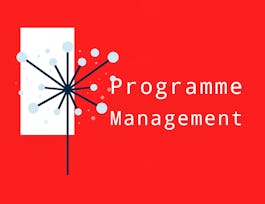As requirements are being gathered and prioritized, they also need to be documented. In Diagrammatic Notations and Software Requirements Specification Writing, we discuss and practice the process of turning requirements into something readable to the customers at a high level, and the developers. When a designer or developer reads your document, they should be able to understand the overall idea, the scope, the domain, the resources, the expectations, and why alternative choices are not selected. To create a document in this way, you use a balance between storytelling (with pictures!) and complex diagrams.



SRS Documents: Requirements and Diagrammatic Notations
This course is part of Requirements Engineering: Secure Software Specifications Specialization

Instructor: Kristen Walcott-Justice
Sponsored by IEM UEM Group
6,376 already enrolled
(53 reviews)
Skills you'll gain
Details to know

Add to your LinkedIn profile
5 assignments
See how employees at top companies are mastering in-demand skills

Build your subject-matter expertise
- Learn new concepts from industry experts
- Gain a foundational understanding of a subject or tool
- Develop job-relevant skills with hands-on projects
- Earn a shareable career certificate


Earn a career certificate
Add this credential to your LinkedIn profile, resume, or CV
Share it on social media and in your performance review

There are 5 modules in this course
Beginning to write a Software Requirements Specification (SRS) is a daunting process. As you start elicitation and move onward through the requirements cycle, you should plan your approach and begin writing as soon as possible. In this module, we discuss local and global rules that should be followed to lead to success.
What's included
4 videos4 readings1 assignment
Within a requirements document, you should tell a story. Pictures help in stories! In this lesson, we'll look into some of the "pictures" that you can create to clarify understanding for all readers and to help yourself know that all points are being covered clearly and completely. Specifically, we'll consider high, system-scope diagrams.
What's included
3 videos5 readings1 assignment1 discussion prompt
At a lower level, Entity Relationship Diagrams, Data Flow Diagrams, and SADT diagrams can be used. All three sets of diagrams work together to explain lower-level relationships and dataflow for components in the system-to-be. In this lesson, we'll discuss what these diagrams look like and what information should be included in such diagrams.
What's included
3 videos2 readings1 assignment1 discussion prompt
System level diagram and low level diagrams work together. Each low level diagram also relates to other low level diagrams. In addition to these diagrams, we also have diagrams to explain events.
What's included
4 videos2 readings1 assignment1 peer review
All diagrams created for a SRS document must link together, in addition to being linked to and explained in the text. In this lesson, we consider inter-view relationships between diagrams and how the combination of multiple diagrams assists in analysis of our system view and explanation. We also talk briefly about a more formal format of requirements writing for mission critical and safety critical systems. Lastly, we discuss using diagrams to correspond with text in the SRS document- remember: you're telling a story!
What's included
3 videos4 readings1 assignment
Instructor

Offered by
Why people choose Coursera for their career




Learner reviews
53 reviews
- 5 stars
66.03%
- 4 stars
18.86%
- 3 stars
5.66%
- 2 stars
1.88%
- 1 star
7.54%
Showing 3 of 53
Reviewed on May 17, 2019
This course is good to understand requirement management and emphasize on basic modules for requirement drafting .
Recommended if you're interested in Computer Science

Coursera Project Network

Coursera Project Network

Coursera Project Network

Open new doors with Coursera Plus
Unlimited access to 10,000+ world-class courses, hands-on projects, and job-ready certificate programs - all included in your subscription
Advance your career with an online degree
Earn a degree from world-class universities - 100% online
Join over 3,400 global companies that choose Coursera for Business
Upskill your employees to excel in the digital economy



